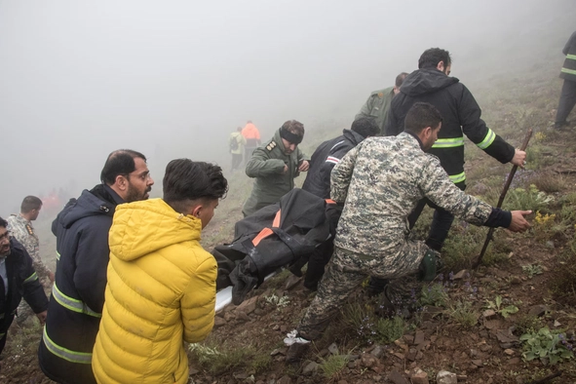Raisi's chopper crash caused by poor weather: Final report

A final investigation report released on Sunday says poor weather was the main cause of the helicopter crash that killed Iran's President Ebrahim Raisi and his entourage in May.

A final investigation report released on Sunday says poor weather was the main cause of the helicopter crash that killed Iran's President Ebrahim Raisi and his entourage in May.
The helicopter crash on May 19 resulted in the deaths of Raisi and seven others including Iran's Foreign Minister Hossein Amir-Abdollahian. Over the past three months, the true cause of the incident has remained shrouded in secrecy for the Iranian public, with conflicting reports continuing to emerge.
Now the Supreme Board of the General Staff of Iran's Armed Forces says in its final report that "complex climatic conditions of the region in spring" was the primary cause of the crash.
The report says the helicopter collided with the mountain after a sudden mass of dense fog rapidly rose upwards.
The investigation found no evidence of sabotage in the helicopter's parts or systems, the Board said, dismissing speculations about possible foul play.
Last month, the IRGC-affiliated Fars News reported that the crash was due to adverse weather conditions and the helicopter being overloaded. Citing an unnamed security source, the report claimed, "The investigation into Raisi's helicopter crash has been completed... there is complete certainty that what happened was an accident." The source identified unsuitable weather and excess weight as the causes, with the helicopter allegedly carrying two more people than allowed under security protocols.
However, the Armed Forces General Staff's communications center, which oversees crash investigations, categorically denied the report by Fars, labeling it "completely false." The center urged media outlets to coordinate with them on defense and security reports to avoid "creating opportunities for enemies to exploit."
Back in May, a preliminary military report stated that no evidence of foul play or an attack was found. But it also noted that only 69 seconds elapsed between the last contact with the helicopter pilots and the crash, with no emergency status declared—a fact that raises more questions than it answers.
However, what makes the incident suspicious is a second report from the Supreme Board investigating the crash that said weather conditions on May 19 were reported as favorable for the flight.
In a nation already rife with internal tensions, the ambiguity surrounding Raisi's death—especially given his status as a potential successor to Supreme Leader Ali Khamenei—has fueled widespread speculations. Among Iranians, both at home and abroad, conspiracy theories have proliferated, ranging from sabotage by a foreign entity to an inside job possibly orchestrated by Khamenei's son, Mojtaba.
The Islamic Republic's failure to provide a clear and transparent explanation for the crash and its contradictory statements have allowed conspiracy theories to gain traction, as Iranians search for answers in the absence of credible information from their government.